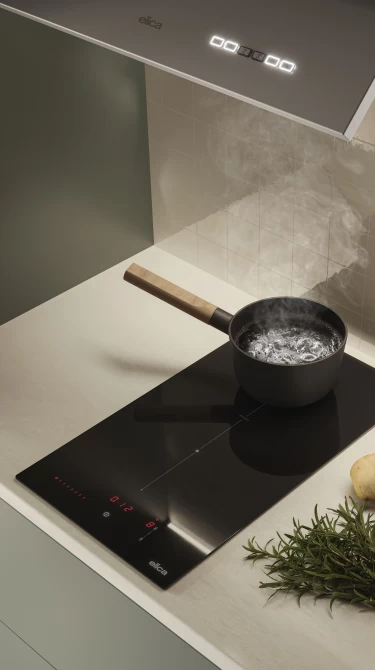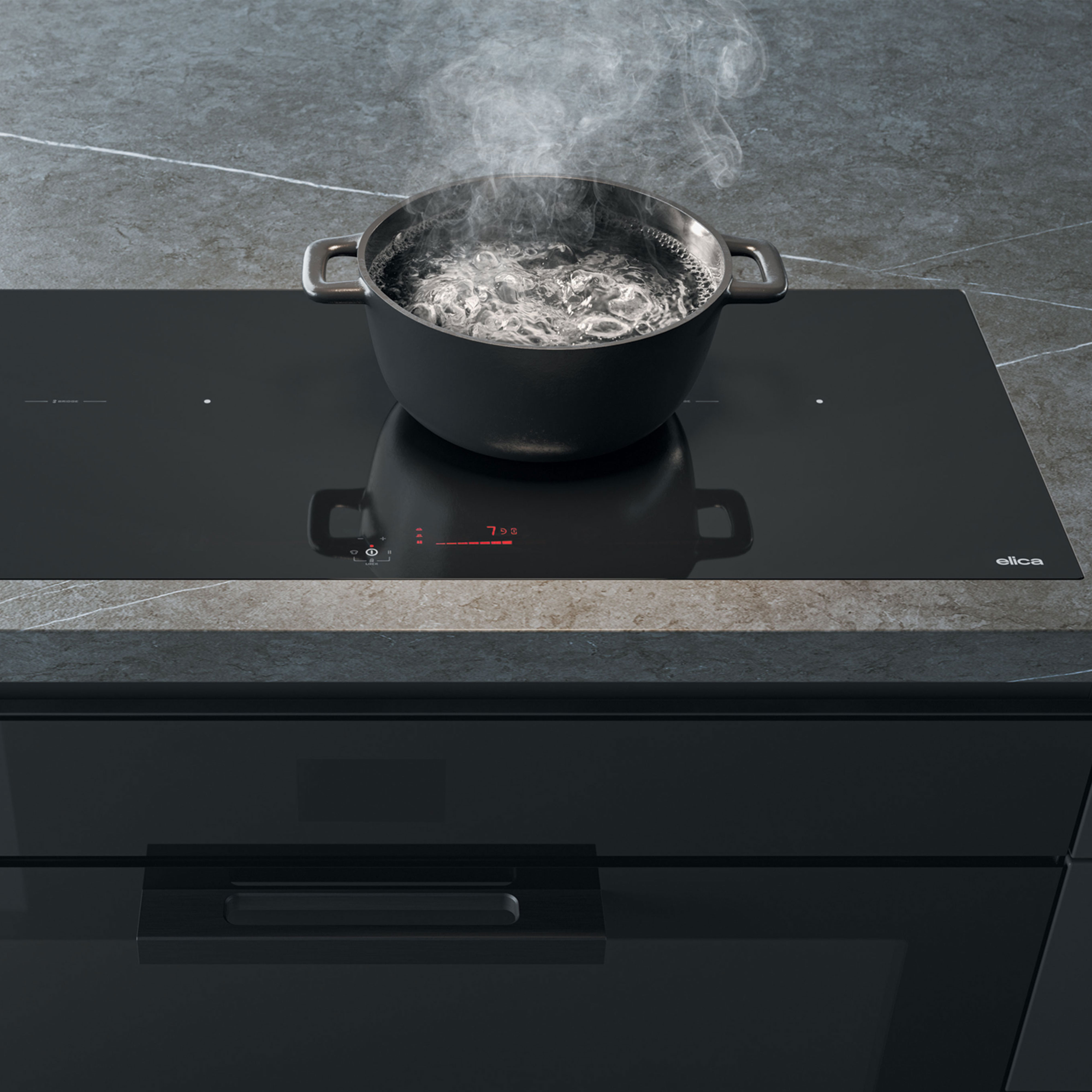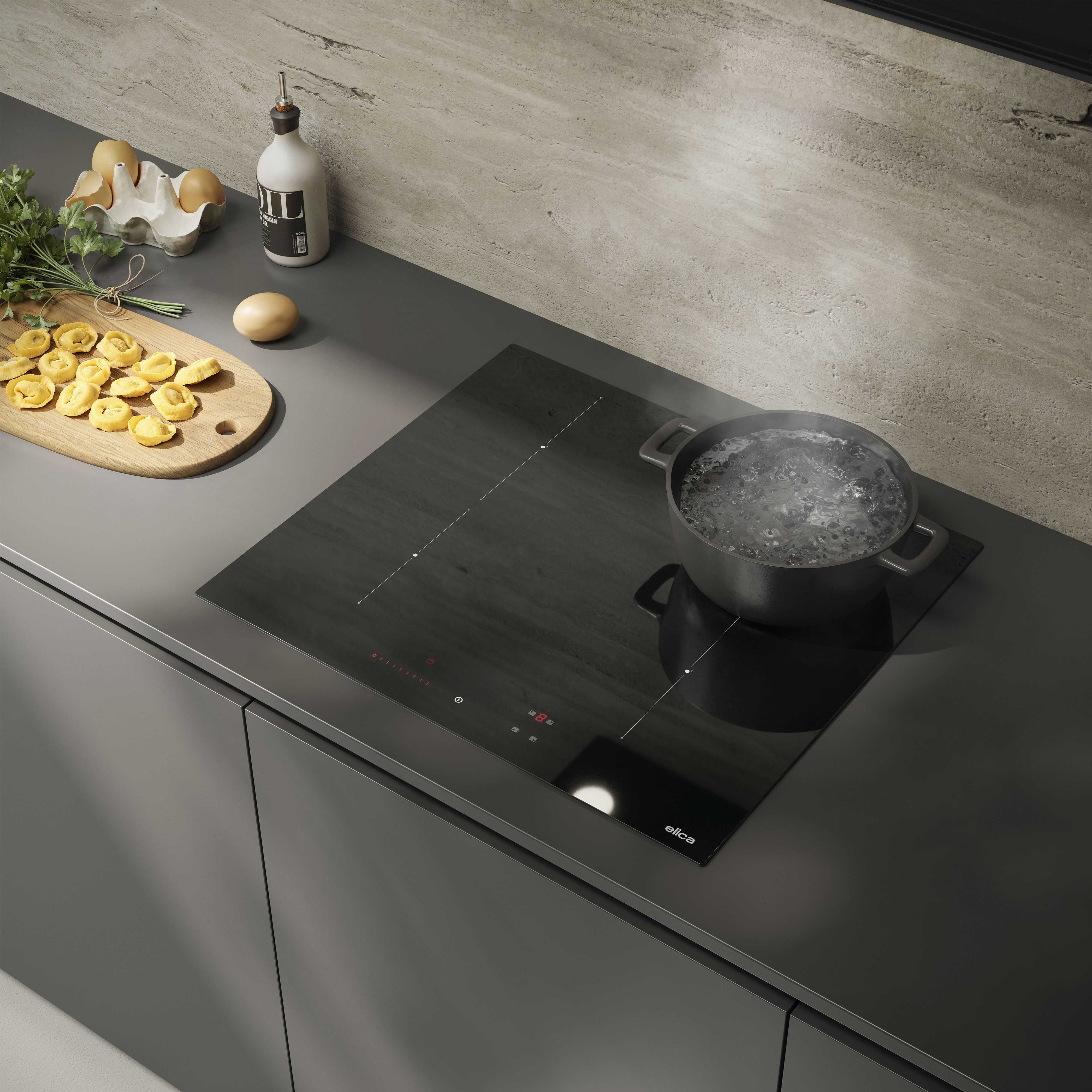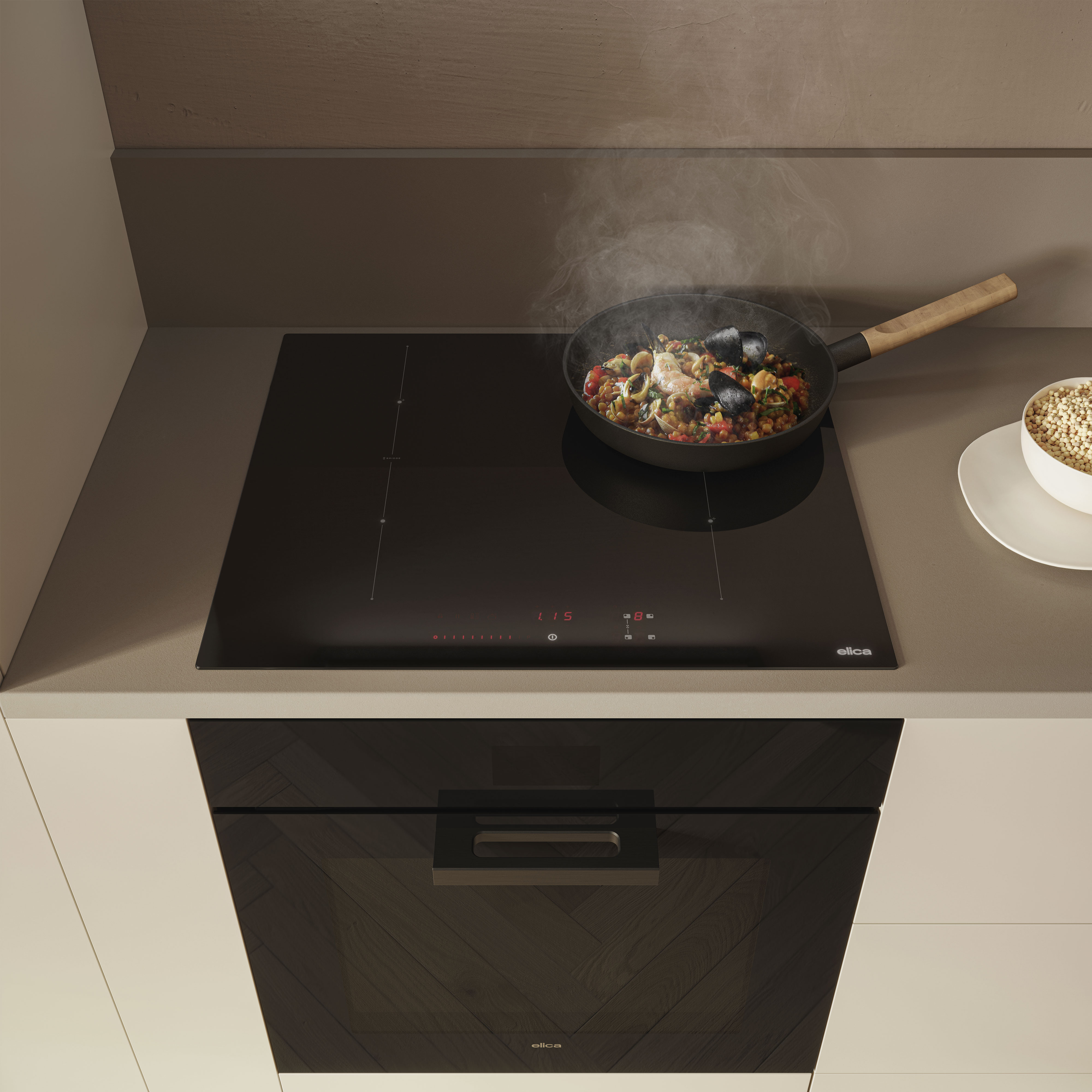
Induction hobs are becoming increasingly popular in modern kitchens. Many people prefer them over electric or gas hobs for their sleek, modern design and easy-to-clean surface, with no knobs, grates, or buttons to worry about. Moreover, induction hobs offer superior performance and efficiency compared to traditional hobs. In fact, an induction hob:
-
does not waste heat, as it is transferred directly from the metal coils to the cookware (whereas gas and electric hobs lose around 50% of heat)
-
reduces energy waste: all heat produced is used for cooking
-
keeps costs down: you only pay for the energy actually consumed to produce heat
Induction hob: how it works
Induction hobs use electromagnetic energy to generate heat. The metal coils, powered by electricity, create a magnetic field, which transfers heat directly to the cookware. Unlike traditional hobs, no heat is wasted, making induction technology far more energy-efficient.
Induction hob: how much does it consume?
When comparing the energy consumption of gas and electric hobs to induction hobs, the difference is clear: induction is the more efficient choice.
-
Gas hobs: these are about 50% efficient. Much of the heat produced by the flame is lost to the air
-
Electric hobs: these are slightly more efficient (around 60%), but still lose a lot of heat
-
Induction hobs: these can be greater than 90% efficient with virtually no heat loss
The advantage is clear: using less energy means lower electricity bills.
Induction hob: Compatible cookware
Induction hobs require specific types of cookware, particularly in terms of
material. For pots and pans to be compatible with an induction hob they must:
-
be made of iron, cast iron, steel
-
be made of induction-compatible materials (check the label at the time of purchase)
-
have the coil spring symbol stamped on the bottom
Induction hob: non-compatible cookware
Cookware made from ceramic, porcelain, aluminium, copper, brass, glass, or stone will not work on an induction hob. These materials do not absorb the heat generated by the magnetic field and therefore cannot heat up or cook food.
Induction hob: how to choose the right one
Induction hobs are available in a variety of models, that differ in:
-
size, suitable for everything from large kitchens to compact spaces
-
design, from extremely linear to extremely ergonomic
-
features, from basic functions to professional-style cooking features
-
performance and energy class
When choosing an induction hob, consider all these factors, as they affect usability, energy consumption, and cooking performance. Our advice? Look for a latest-generation induction hob, perhaps even with a built-in extraction system and advanced features, to enjoy endless possibilities in the kitchen.
Induction hob: how to use it
Most induction hobs share similar basic functions, which are controlled via a touchscreen display. These typically include:
-
switching on the hob, selecting the cooking zone, and activating it
-
choosing and activating the desired power level
-
switching off the hob
After the hob is turned off, an indicator light will display which cooking zones are still hot, to prevent burns. The light switches off only when the surface has cooled completely.
Elica induction hob: how to use it
Elica induction hobs lead the way in technology, performance, and innovation. The range offers a variety of models, featuring:
-
integrated extraction systems
-
award-winning, internationally acclaimed designs
-
energy class A+ and A++
-
XL zones or bridge functions for larger cookware
-
Bluetooth connectivity for remote control via app or voice assistant.
-
pro-style automatic cooking functions for slow cooking, warming milk and broth, preparing custards and sauces without overheating, and for keeping ready-made food warm
How does an induction hob work: final thoughts
We've seen how switching from a gas or electric hob to an induction hob is a smart and functional choice. As these appliances evolve, models are becoming more stylish, more advanced, and more powerful than ever. This means better cooking results, lower energy consumption, and a reduced environmental impact.


